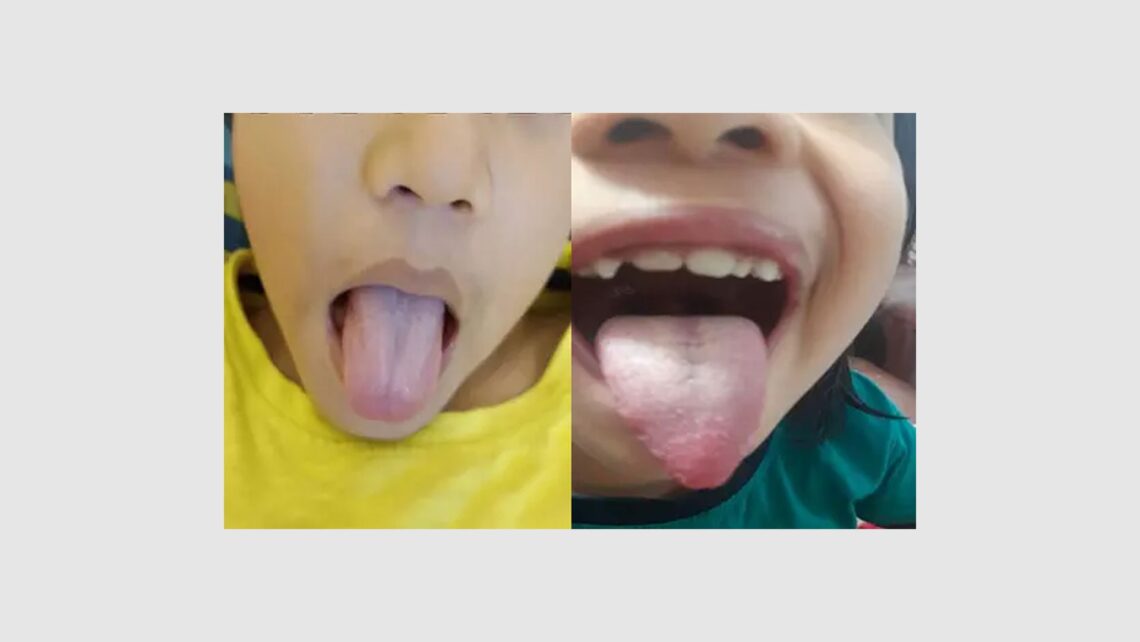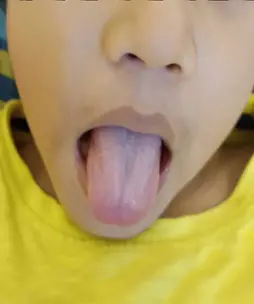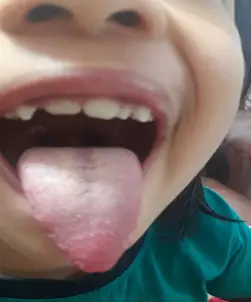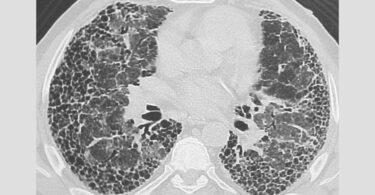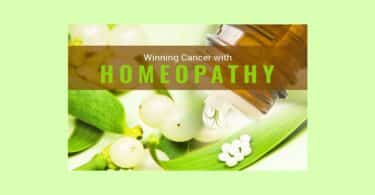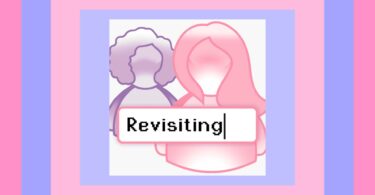Abstract: The role of homoeopathic treatment is based on the systematic case taking, case recording, case analysis and formation of characteristic totality with the help of objective signs and symptoms. The signs in a case can be ascertained only after careful clinical examination, which can become very important for a prescription.
The upsurge of viral fevers and infections is anxiety-provoking for patients, relatives, care-takers especially in the covid era. The anxiety is compounded by flooding of information in the media, economic instability, discrimination, stigma, feeling of alienation, and guilt.
The last three factors are faced by patients and their relatives. So, the timely management, prompt treatment and successful, effective prescription play a pivotal role in bringing ‘ease’ and stability for patient and the relatives.
Here the application of the knowledge is essential, especially in cases of the paediatric age group. In that group, where subjective symptoms are difficult to express, the objective symptoms take an upper hand and guide towards an effective prescription.
Keywords: Acute diseases, Viral fever, Characteristic, Objective signs, Aphorism
Introduction:
Signs and symptoms are the primary building blocks that the homoeopathic physician employs in the evolution of the conceptual image of the patient. A proper understanding and evaluation of these enables him to have an undistorted image which he can readily match with a similar image from the Materia medica.
A good grasp of symptomatology indicates to the prospective homoeopathic physician what to look for in the patient. This prepares him to meet the next question ‘How to look for?’
Acute viral fever:
Infection of the upper airways is the most common acute illness evaluated in the outpatient setting. The infection is usually caused by viruses including rhinoviruses, influenza viruses, parainfluenza and respiratory syncytial viruses.
Bacterial infection such as acute rhinopharyngitis is uncommon and usually presents with either persistent symptoms of an URTI lasting over a week or worsening after initial improvement or acute onset with high fever and inflammatory changes confined to the pharynx.
Viral Upper Respiratory Tract Infection (URTI) is characterized by nasal obstruction and discharge, cough, sore throat, with or without fever, decreased appetite and restless sleep. The initial watery nasal discharge is followed rapidly by mucopurulent nasal discharge, which does not necessarily indicate bacterial infection.
It has been estimated that young children may have as many as 12 respiratory infections per year if he or she attends nursery, 9 infections per year if a sibling attends school, and 6 or 7 per year if the child and a sibling are not at school. Over 100 viruses are known to cause respiratory tract infection.
Management of a febrile child with an URTI:
- No specific therapy is indicated for the majority of children, and the aim of treatment is to make the child comfortable.
- The most commonly prescribed analgesic-antipyretic is paracetamol (81%) followed by a combination of ibuprofen and paracetamol, and URTIs are the most common reason for the administration of antipyretics. [8]
So, homoeopathy is very helpful, effective and plays an important role in management of such cases.
Table 1: Cases with symptom categorization
| SR.
NO. |
POINTS | CASE 1 | CASE 2 | ||||
| 1 | CHIEF COMPLAINT | A 6-year-old boy presented with dry cough and low-grade fever for 3 days. he became very dull. | A 7 years old Child presented with nose block, body pain, coryza transparent watery, no lachrymation, | ||||
| 2 | AILMENTS FROM | exposure to dust | — | ||||
| 3 | PARTICULARS | Slight pain in throat, coryza, sneezing3+
Throat pain aggravated coughing. Coughing aggravated eating3+ and talking3+
|
Started with sneezing and irritation in throat
Mild cough with yellow expectoration |
||||
| 4 | GENERALS | Appetite reduced, refusing the food offered.
Thirst: wants to drink warm water, which is soothing the patient. Thermals: Chilly (generally wants AC but now he can’t even tolerate fan) Fever Full body is warm, head, palms, soles are warm. |
Feverish feeling
(The Child came in contact with Boy as in case 1, so source of infection is same) |
||||
| 5 | MENTALS | Dullness, activity reduced | Dullness – activity lower than normal | ||||
| 6 | On examination | Temp :102 °F as reported by mother
Throat: mild congestion redness, no enlargement of tonsils TONGUE: white coating at the centre, with red tip |
Temp: 102.2 °F as reported by mother
Throat: congested, no enlargement of tonsils Tongue: white coating at centre, with red tip |
||||
| 7 | Photograph |
|
|
Diagnosis: Acute Viral Upper Respiratory Infection
Homoeopathic classification of the disease:
Acute Dynamic disease with fully developed symptoms
Analysis of Cases and Totality of Symptoms:
Here in these cases, it is a Acute presentation, so in the Totality formation
We have to focus on CHARACTERISTIC SYMPTOMS and SIGNS presented by the patient and CHANGE IN DISPOSTION of the patient.
- Mind: Dullness, heat during
- Mouth: Discoloration Tongue, red tip triangular
- Cough: eating aggravation
- Cough: talking aggravation
- Cough: warm drinks amelioration
- Gens: Heat, lack of vital heat
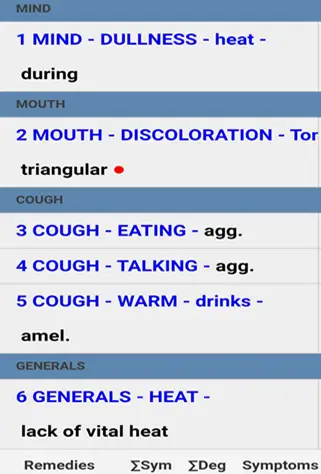
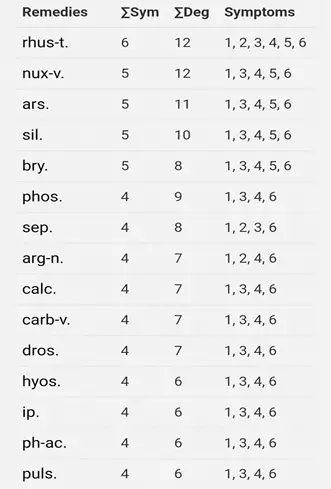
|
REMEDY DIFFERENTIATION
| Rhus toxicodendron | Arsenic album | Bryonia | |
| A/F | Wet getting, cold air | Watery fruits, cold foods and drinks | Heated becoming, drinking while hot, taking cold |
| COUGH | Dry teasing cough from midnight till morning, during chill, when putting hands out of bed | Cough worse at midnight, lying on back
Cough dry, after drinking |
Dry hacking cough worse eating and drinking
Worse in warm room |
| Tongue | Coated except red triangular tip at end | Dry clean and red
Burning in tongue |
Coated yellowish, dark brown.
Heavily white in gastric derangement |
| Thirst | Want of appetite with unquenchable thirst | Great thirst, drinks much but little at a time | Large draughts |
| GENERALITIES | Intermittent chill with dry cough
Chilly as if cold water is poured over him |
Externally cold with internal burning heat
Coldness in spots |
Chill with hot head and face agg in warm room
Dry burning heat |
Indicated Remedy: Rhus tox 200
Prescription: Rhus tox 200, 1st dilution every half hourly
Reference from Boger’s Synoptic Key and Allen’s Key Notes mentions triangular red tip of tongue which was the diagnostic feature to finalise Rhus tox as the remedy.
Special Repertory of tongue by Douglass mentioned the red tip of the tongue (Fig4).
|
Understanding of Cases:
Symptoms pertaining to a part are of importance in acute complaints when they dominate the scene. The general constitutional symptoms usually recede under the circumstances so that they are perceived, if at all, in a hazy manner. Thus, the acute prescription, of necessity, will be based on these particulars.
A key-note symptom which indicates only a few remedies is at times used as the first symptom for repertorization. When employed thus, a large number of remedies get eliminated at one stroke and hence such a symptom is spoken of as an ‘Eliminating Symptom’.
This is one of the safe short-cuts in prescribing in the hands of experienced homoeopathic physicians who have learned to ‘mind the Generals’. [5]
In this case, the objective sign of – red tip of the tongue, acts as an eliminating symptom and leads to the final prescription.
Table 2: Follow ups of cases
| Case 1 | Case 2 | Prescription | |
| Day 1 | Slept well
Then woke up with a nose block, fever 102 °F |
Patient had perspiration (indicates remedy acted and fever reducing)
Coryza and Nose block -sq.- Dullness is same Temp 102.2 F |
Rhus tox 200
1ST Dilution Half hourly |
| Day 2 | Cough is better
Energy levels better, moving around the house, Dullness – is reduced Appetite – improved, ate little No fever. Temp 98.2 F |
Cough reduced,
Expectoration whitish Coryza is present, Nose block occasional on and off Dullness little less, playful little Temp: 99.5 °F |
Rhus tox 200
1st Dilution Half hourly |
| Day 3 | Much better,
Jumping around house, playing, activities improved, No Dullness Appetite – much better, eating well, drinking water also Slept well for 10-11 hours without any disturbance |
No fever,
No Coryza Nose block slight Dullness not there, normal activity and playfulness resumed |
Rhus tox 200
1st dilution Infrequent repetition |
Learning from the cases:
The symptoms observed by the physician are called objective symptoms. During the examination of the patient, the physician may also elicit certain objective assessments of the patient and these are called the signs.
In a diseased person, there may be subjective symptoms, objective symptoms and the signs. Therefore, the homeopath studies the signs and symptoms of the sick very carefully to understand the internal derangement of the patient. [4]
Aphorism 72: Acute Disease definition
The diseases to which man is liable are either rapid or chronic. Rapid morbid processes of the abnormally deranged vital force have a tendency to finish their course more or less quickly, but always in a moderate time – these are termed acute diseases
Aphorism 153: Characteristic Symptoms
This comparison of the collective symptoms of the natural disease with the list of symptoms of known medicines, in order to find among these an artificial morbific agent corresponding by similarity to the disease to be cured, the more striking, singular, uncommon and peculiar (characteristic) signs and symptoms of the case of disease are chiefly and most solely to be kept in view; for it is more particularly these that very similar ones in the list of symptoms of the selected medicine must correspond to, in order to constitute the most suitable for effecting the cure.
Aphorism 162: “the so-called homoeopathic aggravation, or rather the primary action of the homoeopathic medicine that seems to increase somewhat the symptoms of the original disease in the first or few hours, is certainly true with respect to diseases of a more acute character and of recent origin” [1]
The impression that signs do not interest a homoeopathic physician much, needs to be corrected – as they furnish valuable data over which there need not be two opinions. Signs which are of the non-diagnostic type are of great importance in prescribing. At times they indicate the remedy straight off, e.g., butter-fly pigmentation on the face indicative of Sepia; vertical furrows between the eye-brows pointing to Lycopodium. [5]
The objective symptoms value lies in the fact that they cannot be distorted by the design of the patient; he little realizes that he is manifesting these objective symptoms and therefore they picture accurately certain phases of the case.
Objective symptoms, those that are seen by the careful observer, have more importance in the child than in adult life, because through them we see the expression of the child’s disposition. [6]
Indirectly revealed in certain automatic or involuntary ways – The objective symptoms form more or less accurate deductions. They enable the physician to view disease from the standpoint of the patient. How great an advantage they afford to the prescriber can be appreciated only when we are deprived of them, as in the case of infants and animals, and find how much more difficult is our task under such circumstances.
Hahnemann defines objective symptoms as, “the expression of disease in the sensations and functions of that side of the organism exposed to the senses of the physician and bystanders.”
In this peculiar definition there is an allusion to his definition of disease as a dynamical disturbance of the vital force and of medicine as, “a pure science of experience, which can and must rest on clear facts and sensible phenomena clearly cognizable by the senses.” [7]
Conclusion:
- The Therapeutic utility of objective symptoms in homoeopathic practice is understood.
- Emphasis on examination and objective signs to be observed by the Physician.
- The efficacy of homoeopathic medicines in a paediatric age group is established
- The role of homoeopathy in acute viral infections is understood
- The role of keynotes as eliminating symptoms is explained.
Acknowledgement:
We thank Satva Homeopathy and Charitable Sanstha for providing cases for the study.
References:
- Dr Samuel Hahnemann. Organon of Medicine, 6th Edition, Indian Books and Periodicals Publishers, New Delhi, 2005, 260, IB0405.
- Cyrus Maxwell BOGER – A Synoptic Key of the Materia Medica: A Treatise for Homeopathic Students: Rearranged and Augmented Edition: 1
- C. Allen-Allen’s Keynotes Rearranged and Classified with Leading Remedies of the Materia Medica and Bowel Nosodes including Reportorial Index – Original Allen 10th Edition
- https://www.nhp.gov.in/Classification-of-Symptoms_mtl
- M. L. Dhawale, Principles and Practice of Homoeopathy, First edition, 1967, Dr L.D. Dhawale Memorial edition, Third Edition 2000 3rd reprint 2004, Second Edition ISBN 81-902113-0-7
- A. Roberts, The Principles and Art of Cure by Homoeopathy, LPE 2002, 14th Impression: 2014, B. Jain Publishers (P) Ltd, IBSN 978-81-319-0148-9
- Stuart Close, The Genius of Homeopathy, Lectures and Essays on Homeopathic Philosophy, LPE August 2002, 12th Impression: 2014, B. Jain Publishers (P) Ltd, IBSN 978-81-319-0137-3
- https://www.ncbi.nlm.nih.gov/pmc/articles/PMC7122655/
- E. Douglass, Repertory of Tongue Symptoms, Philadelphia, Boericke and Tafel, 1896



